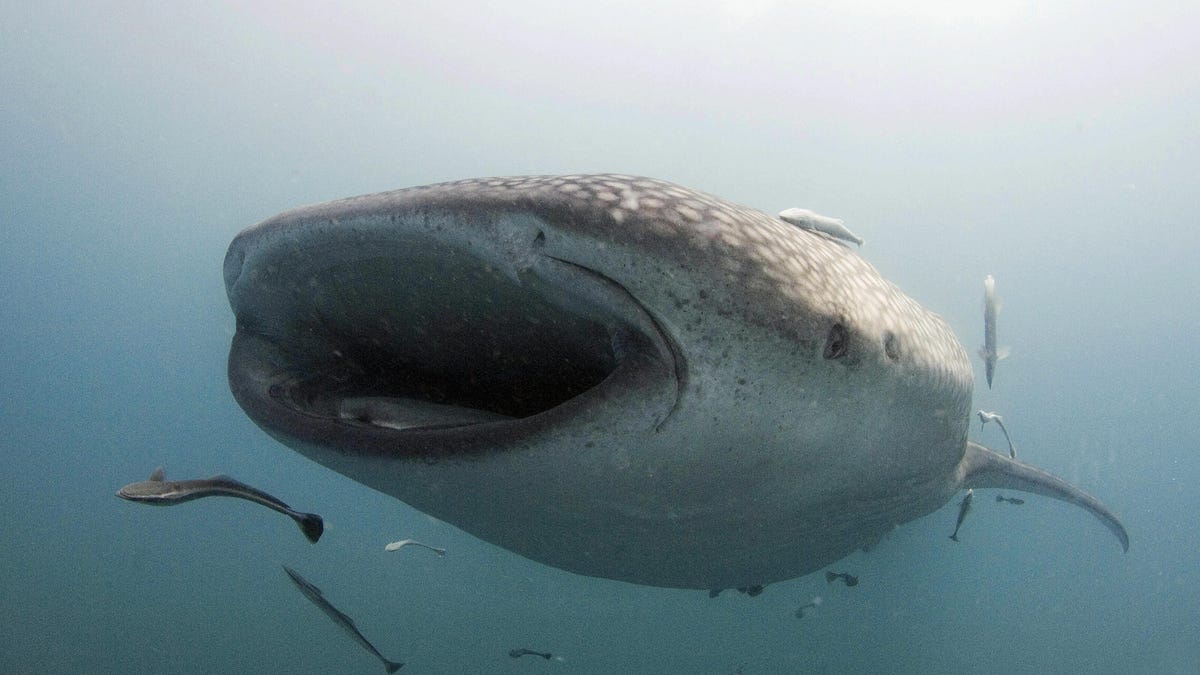Scientists say whale sharks have teeth on their eyeballs
A new study found that some whale sharks have numerous "dermal denticles ... distributed on the eye surface."

They're harmless to humans but still... teeth on eyeballs is pretty metal.
Sharks are terrifying creatures at the best of times, and the Whale Shark -- despite being harmless to humans -- is the biggest of all, given they can grow up to 32 feet in length. But scientists have just revealed a whole new layer of wonder (and potentially terror) regarding the largest fish in the sea.
Their eyes are covered in teeth.
The technical term is "dermal denticles."
Dermal denticles are essentially tiny structures that look and feel very similar to scales, but are actually teeth. Shark skin, with its rough, sandpaper-like texture are also made up of dermal denticles. These dermal denticles actually help reduce friction in the water, enabling sharks to swim faster.
But despite the fact sharks are covered in them, dermal denticles on literal eyeballs is pretty unique. Scientists from the Okinawa Churashima Research Center in Japan, who authored the study, say it's "a novel mechanism of eye protection in vertebrates". The teeth are a little different from those found on shark skin, because they are designed for "abrasion resistance". Essentially these teeth are designed to help protect the whale shark's eyeballs.
In addition to the whole "teeth on their eyeballs" thing, whale sharks also has what the Okinawan researchers are describing as "a strong ability to retract the eyeball into the eye socket."
Both the retraction strategy and the whole "teeth on eyeballs" thing makes sense when you consider that whale sharks actually don't have eyelids. According to the research paper, this adaption is most likely unique to whale sharks.
Pretty sure whale sharks have just officially become one of the most metal fish in the sea.

